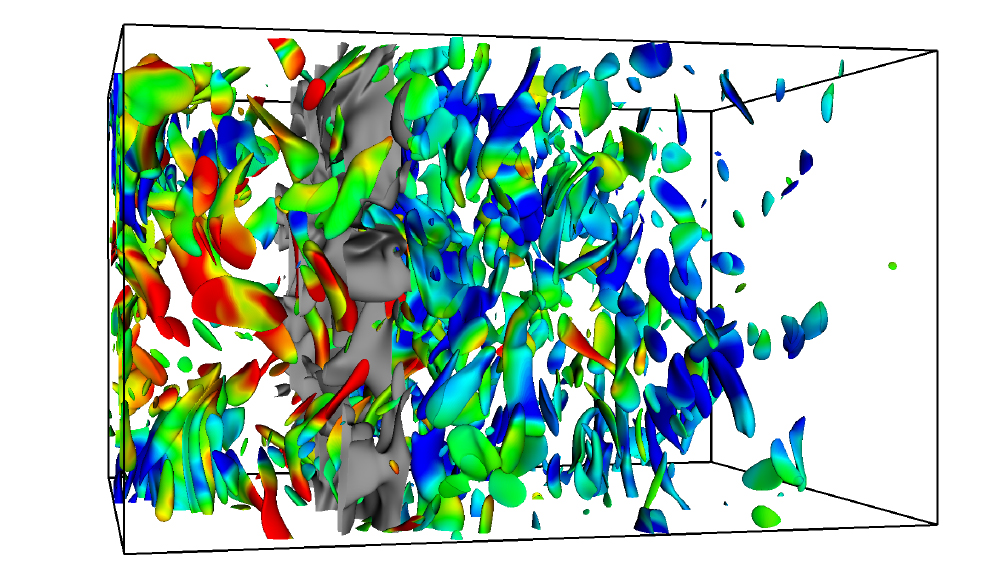
Dr. Diego Donzis and Dr. Chang Hsin Chen from the Department of Aerospace Engineering at Texas A&M University have been looking at new ways in which shock turbulence interactions (STI) can be understood. Their research was recently featured on the Texas Advanced Computing Center website, and shared on various websites, including hpcwire.com, phys.org and sciencedaily.com.
STIs are observed in a number of contexts, including supersonic aerodynamics, turbulent combustion and astrophysical flows, making them an important topic in fluid dynamics.
In the study “Shock-Turbulence Interactions at High Turbulence Intensities,” funded by the National Science Foundation and the Air Force Office of Scientific Research and published in the May 2019 Journal of Fluid Mechanics, a new theoretical framework was developed and tested to understand turbulent jumps of mean thermodynamic quantities, shock structure and amplification factors.
In order to prove their theories, Donzis ran a very large data set of shock turbulence interactions at different conditions on Stampede2, the most powerful computer in the United States for open science research, housed at the Texas Advanced Computing Center, part of The University of Texas at Austin.
See “Turbulence Meets a Shock” to read more about their research.